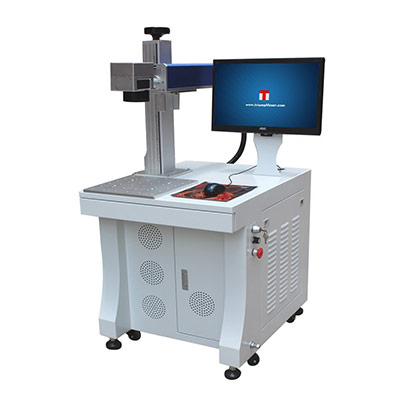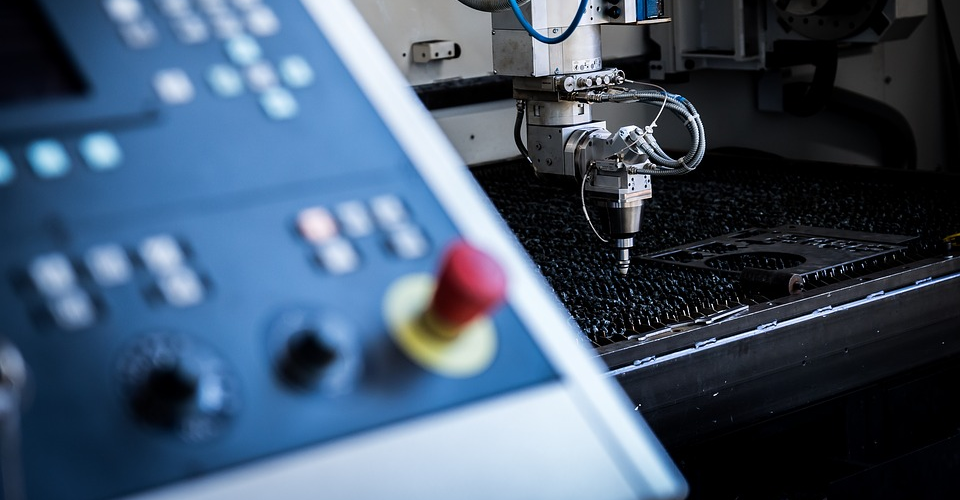How to Choose a Fiber Laser Engraving Machine
Browsing for a good fiber laser engraving machine might be a lot different than buying a laptop or TV, but that doesn’t mean that you’re not going to get overwhelmed with choices. With so many manufacturers recognizing the unique benefits of laser technology, suppliers have also ramped up the production of these laser engraving machines.
Fiber lasers are pretty expensive, leaving you little room to make mistakes should you need to buy one. We have prepared this short guide to help you understand which factors to consider to make sure that a fiber laser engraver suits your needs?
How does a fiber laser engraver work?

To make an informed decision on which fiber laser engraver to buy, we must first develop an understanding of how they work. Just like any laser engraver, the fiber laser is central to allowing this machine to fulfill its purpose. No matter the material of the workpiece, the role that the laser plays is the same – as a means to deliver energy to the surface of the workpiece.
Lasers are exceptionally suited for the job because of their high power density. This means that a laser can deliver high energy levels with pinpoint accuracy, allowing for very precise and intricately detailed cutting and marking. The whole process is automated, reducing the need for operator intervention and the effect of human error on the final product.
Fiber lasers are relatively new laser technology. They are characterized by the use of flexible and compact optic fibers which have been doped with rare earth elements. In the field of laser engraving, the commonly used rare earth elements are ytterbium and thulium. Other uses of fiber lasers also use other rare-earth metals, erbium being the most common one.
The unique fluorescent characteristics of rare earth elements make them ideal as doping agents in lasers. Since they absorb and fluoresce light with minimal loss, making them highly efficient in pumping a laser source. The sudden rise in the value of rare earth elements is indicative of how widely fiber optic technology is being used nowadays – not just in the manufacturing industry, but chiefly as a means for communication and data transmission.
Factors to consider in choosing a fiber laser engraver
Laser engravers are often touted to be extremely versatile in their applications, especially compared to traditional manufacturing methods. However, they are not infinitely versatile. If you don’t do your homework, you may still end up with a laser engraver that is a poor fit for your intended applications.
Once you have decided how you want to use your fiber laser engraver, here are the factors you should look at when choosing which machine to buy:
Laser power
Lasers are versatile because you can simply turn and up or down the power input to the laser to controls its intensity. However, the upper power limit of a laser is something you may need to take note of if you’re planning on heavy-duty use. Aside from being able to cut through or engrave stronger materials, a more powerful laser can do the job faster, thereby increasing the throughput for your process.
In most cases, a 100W laser works well enough, even in industrial settings. If you work with hard metals like titanium or carbon steel, or if you want to push the rate of finishing your laser-engraved products, then you can push for higher-powered lasers. There are machines that can go up to 500 W.
Laser source
When it comes to laser engraving, there are really only two rare earth elements to choose from as a laser source – ytterbium and thulium. Of the two, ytterbium is more suitable for heavy-duty applications such as for marking and cutting of metals. Thulium is more appropriate for lighter materials including plastics, wood, and fabric.
This difference in how well these different lasers penetrate through different materials is a function of the frequency of light fluoresced from each rare earth element. Ytterbium generates light at a smaller wavelength, allowing it to easier penetrate through metals without getting reflected.
Lens parameters
The lens of a laser is just as instrumental as its doping agent. It is responsible for focusing all the light fluoresced by the rare earth elements inside the optic fiber, increasing the power density, and giving laser engravers the capability to create extremely fine details. Parameters such as the focal length, spot size, and the number of passes are crucial in determining the working capacity of a fiber laser engraver.
If your goal for a laser engraver is to come up with intricately detailed pieces, then the laser’s beam diameter is probably the parameter you should be paying the most attention to. Other parameters, like the scanning speed and pulse repetition rate, are more important factors in determining the speed of laser engraving.
Continuous or pulse operation
In laser operations, deep cuts or marks are rarely executed using just a single continuous exposure to the laser. Instead, energy is delivered to the same spot in short but regular pulses. This allows the laser to cut through thick material without causing the area around the mark to be heated.
Pulse operations are very important in expanding the capabilities of a laser engraver without a drop in quality. Pulses are fairly standard in today’s laser engravers, although parameters like pulse repetition rate and pulse spacing may differ from one model to another. Make sure your machine can deliver pulses fast enough to ablate through metals – 100,000 pulses per second should be your goal, and going down to 50,000 would be too slow.
IP Rating
This has less to do with the performance of a fiber laser engraver and more with how well it can withstand harsh environments. The IP rating of any machine or device is an indicator of how well it is protected from damage due to water or dust incursion. If you’re going to place a laser machine in a manufacturing facility with other equipment, you may need to consider the specific IP requirement that the machine’s location requires.
Auxiliary equipment
Laser engravers have been around for a while, so modern versions tend to have a few quality-of-life improvements. These include an enclosure for the engraving area to keep it safe, an air knife for removal of particulates from the workpieces, and filtered vents to extract the dust generated by the process. These may seem like minor enhancements for convenience, but you’ll be thankful for them if you end up using your laser engraver for several hours a day.
All the factors we’ve listed here are the more technical ones to look at. There are still other things to consider such as the warranty for the machine, the reliability of the manufacturer, and the list of services they can provide should the machine need maintenance or repair. These are standard considerations for any heavy equipment, so you should not have any problems if you buy from a brand or manufacturer that you can trust.
Final thoughts
Fiber lasers seem like the technology that could help bring laser technology to more mainstream adoption. They are more efficient, can penetrate through metals, and are powerful enough to cut through hard materials. The use of optic fibers also allows fiber lasers to have smaller footprints which manufacturers certainly appreciate.
We have prepared this guide for those unfamiliar with fiber laser engravers who may find it a challenge to look for an appropriate machine for their needs. Although some of the discussion points seem highly technical, these really are just the fundamentals of laser technology. This only goes to show how far the fundamental understanding of the basic concepts in any field – even in fiber lasers – can take you.

